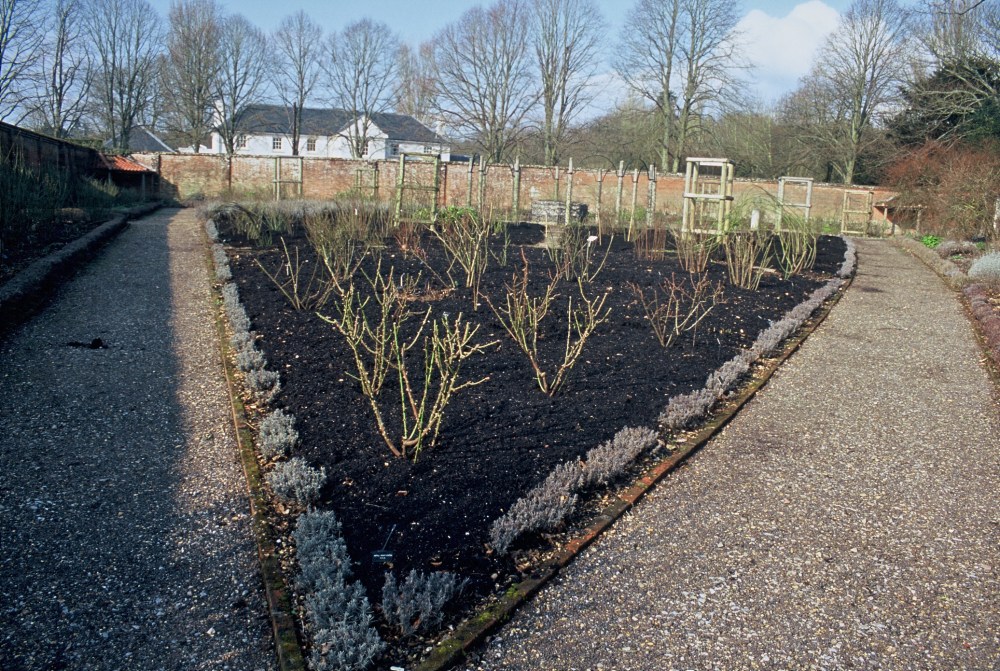
It’s one of the nicest and most rewarding jobs you can do in gardening, turning a weedy mess into one that is a delight to look at and that will reward you with a summer of less weeding and more enjoyment from the plants. I like to try and make a difference between the types of mulching, decorative mulching for me is using either an nonorganic material like stone, slate etc or something like bark and wood chip mulch that does rot down but it takes a lot more time to releases the nutrients into the soil but they may have other advantages like provide an ideal environment for friendly fungus to use. For my job of the week, I am looking at what I call a feeding mulch. A feeding mulch is a mulch that provides the soil with good well rotted organic matter that will be taken into the ground both with a our help and also worms and other micro organisms that feed on dead plant matter. This type of mulching really helps to provide a really healthy soil and a healthy soil can mean a healthy plant. It can help Break down heavy clay soils or add a bit of bulk to sandy, gravelly poor soils. Feed mulching is really good with hungry plants, ones that put on a lot of growth each year, plants that get pruned hard back, plants like roses, herbaceous plants, coppiced plants like dog woods etc. it will provide a lot of the nutrients they need to get them growing strongly again. Like all mulches, it still helps to cut down evaporation and keep water in the soil, helps to cut down annual weeds but also helps with some perenial weeds like couch grass, ground elder, greater bindwind, they love to grow between the mulch and the soil, making it easier to dig out and remove. Not all plants will like the extra food so avoid using it too much around Mediterranean plants like lavenders, sage etc as it will cause them a little damage.

Now what to use? Well for most areas, if you have some home produced compost of leaf mould, that’s idea, if not something like composted green waste is just as good, well rotted manure works so well on very vigorous or repeat flowering plants like hybrid tea roses, I prefer to us sterilised bagged manure rather than loose material. Another great one is mushroom compost, which is basically sterilised manure with lime added, works well on clay but avoid on alkaline soils and acid loving plants.

Right that’s enough about the theory behind it, I like to first weed though the beds removing all the weeds, edge up any lawn edges with a half moon to produce a nice deep edge between the lawn and the bed, Add a base ferlizer to the whole bed not around the base of the plants but the whole bed, using something like Vitax Q4 ferlizer and then add a minimum of 50mm but nearer 75mm of mulch and spread it over the whole bed so it looks very smart and clean. It’s ok to cover over most of herbaceous plants but be careful not cover up the base of any shrubs or trees. And that’s it nice and simple, well worth repeating every 1-2 years or as required. For me it’s an important clog in the wheel of providing healthy strong plants for my clients to enjoy and I find it even more important when growing plants like roses, it is a small but important part of providing healthy looking roses for them to enjoy. It also looks very nice on the beds and the colour of the product used also brings out the best in the young foliage coming out and gives you a feel good factor, knowing it looks good and you have done the best you can for the health of the beds and plants.

Looks great there Thomas. All the best. Karen
Thank you Karen 😀
Slightly late, just spreading first few of 40 bags of spent mushroom compost on my borders. It doesn’t look very well rotted tbh but it’ll be fine I think. I have a lot of planting to do. Can I plant into it, through it, or what? I mean can I make a planting hole in the mulch and just plant into that, or do I need to dig through into the soil and plant into that?
I am still doing it as well 😀yes I tend to use it like aplanting mulch and plant though it, I just dig a hole into the mulch, mix it up with the soil and plant directly into it don’t need to add a thing then either
Okey doke, thanks, will do that.
Follow up question if I may. I read the bit about lavender after I’d mulched…my lavender. What harm will come to it? Should I de-mulch it?
Might be worth reducing the thickness around it, if it’s a Vera hybrid they like a little fed angustifolia and French tend not so as much
Ok ta, I’ll shift the shroom a little. Cheers